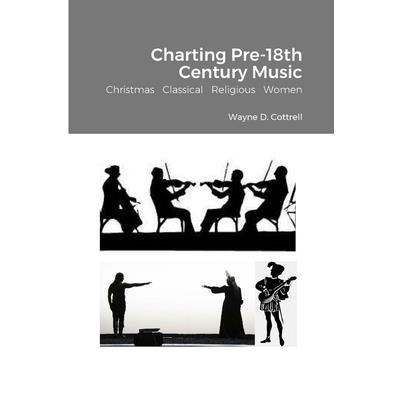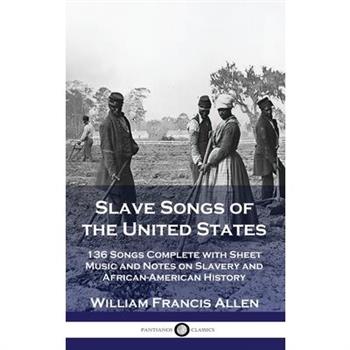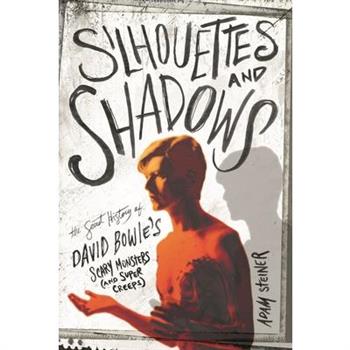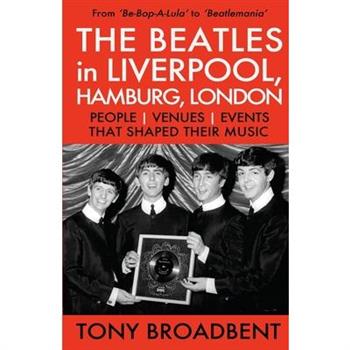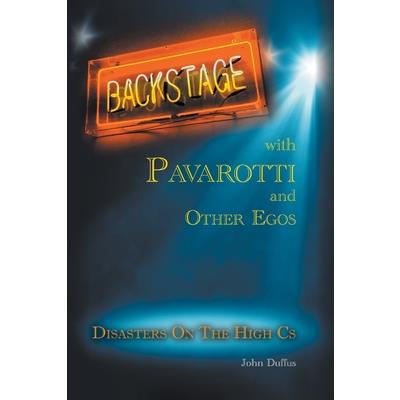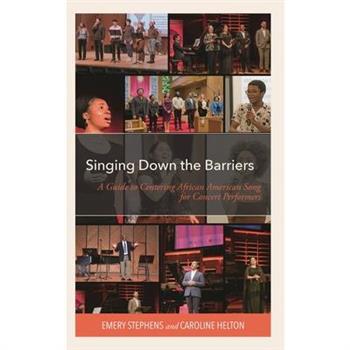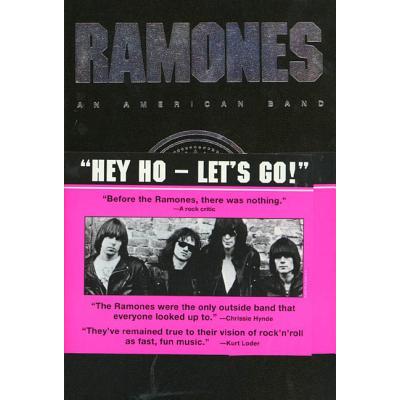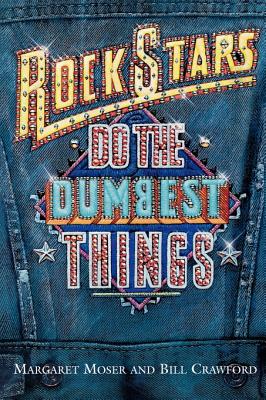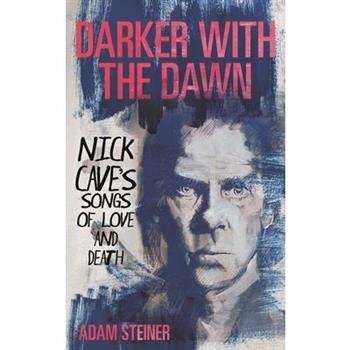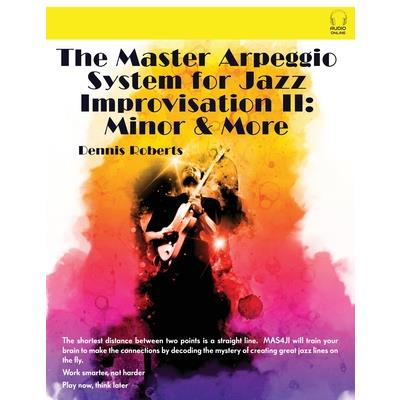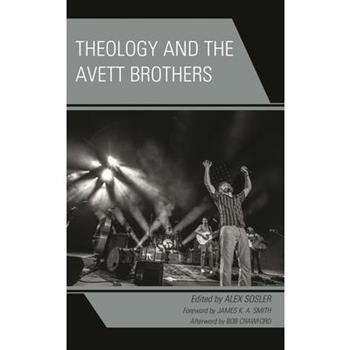Charting Pre-18th Century Music
Is it possible to compile and rank music that was composed prior to the 18th century; that is, before 1700? The answer is yes, if one considers a combination of Classical music listener polls, Classical music forum rankings, the numbers of recordings of early music, and the number of appearances of hymns in hymnbooks. With such a variety of resources, Christmas, Classical, Religious, and music written by Women can be listed and ranked, dating from eras that long preceded recording technology and official music charts. The music compiled in this book turns the clock way back to a timeline that extends from Ancient to Early & Middle Baroque. Some of the music predates music notation, but has nevertheless endured. The music also dates from a very long era during which nearly all compositions were for voice only. Instrumental music for the lute and viol and their partners, and later the harpsichord and organ, were only beginning to come in vogue. Nearly all of the music in the book's charts is from western Europe - to compensate for the geographical limitations, early artistry from beyond western Europe is discussed. The number one composition from the entire pre-18th century period, finally finding new life nearly three centuries after it was written, is Johann Pachelbel's "Canon & Gigue in D." But, don't stop with that piece of information, as there is a whole volume of music about which to learn, listen and love. So, get the book, and look inside...
Slave Songs of the United States
136 songs of African-American slaves, collected and compiled a few years after the Emancipation Proclamation, are presented here complete with their musical notation in this superb edition.In the introduction, the chief compiler of this music, William Francis Allen, expresses his admiration for the musical talents of black Americans. He mentions that even prior to the end of slavery, public appreciation existed. Yet Allen realized that much of this music, emblematic of the hardships and life of black slaves, was in danger of being forgotten in time. He and his assistants found and interviewed former slaves who would sing their tunes. In this way, a total of 136 songs, their notes, verse and chorus lyrics, were successfully put to paper.The author observes how much of the music is religious, with allusions to the Bible, Jesus and Lord frequent. Yet narratives of slave life, and the emotions of the singers, also feature strongly. Many of the songs were sung repeatedly as the slaves worked the fields, their choruses and melodies being intended to enliven a day of hard labor in the heat of the sun. The music in this collection is divided by region; differences in vocalizing and phrases can be observed, reflecting the various localities in which slaves were raised and labored in.
Silhouettes and Shadows
An avant-garde pop album rich with tension and fear, 1980's Scary Monsters (and Super Creeps) marked a pivotal point in David Bowie's career. Standing at the bleeding edge of the new decade between the experimental Berlin Trilogy (Low, Heroes, and Lodger) and 1983's wildly successful Let's Dance, it was here Bowie sought to bury the ghosts of his past and the golden decade of the 1970s to become a global superstar reaching millions of new fans. Featuring fresh insights and exclusive interviews with close collaborators, Adam Steiner's Silhouettes and Shadows uncovers the studio stories, meanings behind, and secret history of Scary Monsters. Steiner gives a nuanced, memorable portrait of Bowie at a personal and professional crossroads, drawing on his own struggle with addiction, growing paranoia, and political turmoil. Despite the album's confrontational themes, it included the hit singles "Fashion" and "Ashes to Ashes," with Bowie riding a new wave of inspiration, from the post-punk of Joy Division, The Specials' two-tone revolution, and the stadium synth-pop of Gary Numan. Most importantly, it marked a final goodbye to Major Tom, Ziggy Stardust, and The Thin White Duke, characters and personas that had defined his career: in this rare moment, David Bowie, the costumed clown of romance, suffering, and song, let his mask slip to reveal David Jones, the man within.
Perfect Strangers? Deep Purple 1984-1993
By the end of 1973, Deep Purple Mk2 was no more. Ian Gillan had been replaced by David Coverdale on vocals whilst Roger Glover had been replaced by Glenn Hughes on bass and vocals. It left the nucleus of Ritchie Blackmore, Jon Lord and Ian Paice to take Deep Purple in a new direction, which eventually came to a halt with the Mk4 line-up in 1976. With Deep Purple In Rock (1970), Fireball (1971), Machine Head (1972) and Who Do We Think We Are (1973) to Mk2's credit, many fans lived in hope that one day, the band would get back together - with the music press occasionally courting the odd rumour that it would happen! Finally, in April 1984, the reunion of Deep Purple Mk2 was announced. Fans had got their wish. Or had they? With the landscape of rock and pop music having changed since the band's success in the seventies, and with each member of Deep Purple Mk2 having nurtured very different careers as individuals by that point, a reunion was never going to be plain sailing! In this this book, Laura Shenton MA LLCM DipRSL examines the merits and challenges of what it was for Deep Purple Mk2 to get back together in the eighties. Included is a critical analysis of Mk2's second round of albums: Perfect Strangers (1984), The House Of Blue Light (1987) and The Battle Rages On... (1993).
The Big Book of Irish Polkas
Over 140 Irish polkas are included in this book. The tunes include basic chords and the book has fingering charts for various instruments and a transposing chart in the appendix for reference. Irish polkas are especially popular in southern Ireland in the province of Munster, specifically the counties of Cork, Kerry, Clare, among others, where the local style makes heavy use of Irish polkas and slides. The tunes are lively and well suited for dancing. And the simple melodies makes them great for beginner musicians just getting into Irish/Celtic music and equally great for seasoned players wanting to add their own style and grace to the tunes.
Backstage with Pavarotti and Other Egos
Luciano Pavarotti was one of the best-loved international personalities of the 20th century. A singer who broke free of opera houses to perform before massive audiences in huge arenas around the world, becoming in the process the richest opera singer in history. John Duffus presented and worked on a dozen concerts with Pavarotti, including the last he ever sang to a paying public, as well as others with such artists as Dame Kiri Te Kanawa, Isaac Stern and fellow tenors Pl獺cido Domingo and Jos矇 Carreras Blessed with a glorious voice, described as "a freak of nature that comes very rarely in 100 years", Pavarotti seemingly had it all. After his entry into arenas, though, disasters began to strike with increasing regularity. He was cancelling previously scheduled concerts and operas virtually at a whim. The ego had become as large as his girth. The backstage shenanigans of the promoters, agents and others who worked on these concerts have never been revealed, until now.
More Music for Baritone Ukulele
32 Solos and 2 Duets for Baritone Ukulele, presented in both standard notation and tablature. A satisfying variety of instrumental arrangements of traditional folk tunes and classical repertoire from well-loved composers. The folk tunes come from a variety of origins. The classical repertoire includes adaptations of popular guitar works as well as music originally written for ensembles or keyboard instruments. The level of expertise necessary to play the pieces varies widely, from beginner to advanced. Although the pieces are not strictly ordered from least to most challenging, the pieces requiring the least technical skill and/or stamina are closer to the front of the book and those requiring the most experience are presented toward the end. A Glossary and Notation Key are provided. The book can be previewed at the author's website: EllenWhitakerGuitar.com.
More Music For Classical and Fingerstyle Ukulele
Fourty-four familiar pieces (folk tunes and classical music) arranged for ukulele (low G). There are 42 solos and 2 duets. All music is presented in both standard notation and tablature. The level of expertise necessary to play the pieces varies widely, from easy to advanced, with most falling into the intermediate range. The pieces are loosely arranged from easier to more challenging. This book may be previewed at EllenWhitakerGuitar.com. With the goal of providing an interesting variety, the book includes instrumental arrangements of traditional folk tunes from a variety of origins, a ragtime piece by Scott Joplin, a klezmer tune, an original blues tune, and arrangements of classical pieces by various well-loved composers. Some of the classical pieces are adaptations for ukulele of popular guitar or lute works that many classical guitar students are familiar with, including professional level repertoire. Other classical pieces in this volume were originally written for sizable ensembles or keyboard instruments and are arranged here for solo ukulele. A Glossary and a Notation Key are provided.
Music City Melbourne
How did Melbourne earn its place as one of the world's 'music cities'? Beginning with the arrival of rock 'n' roll in the 1950s, this book explores the development of different sectors of Melbourne's popular music ecosystem in parallel with broader population, urban planning and media industry changes in the city. The authors draw on interviews with Melbourne musicians, venue owners and policy-makers, documenting their ambitions and experiences across different periods, with accompanying spotlights on the gendered, multicultural and indigenous contexts of playing and recording in Melbourne. Focusing on pop and rock, this is the first book to provide an extensive historical lens of popular music within an urban cultural economy that in turn investigates the contemporary nature and challenges of urban music activities and policy.
Singing Down the Barriers
Never has there been a more urgent time to foster cultural humility, diversity, and community dialogue while addressing systemically exclusionary teaching practices in vocal music. Singing Down the Barriers offers readers from all ethnic backgrounds a space in which to better understand the historical and cultural barriers to researching, programming, and performing repertoire by composers from the African diaspora. Emery Stephens and Caroline Helton present a pedagogical guide for singers, singing teachers, students, and administrators that will assist not only with programming but also in creating sustainable, brave spaces for critical conversations on race, equity, and American music. The book is divided into three parts: Part one presents historical context for African American song from the 19th century to the 21st century.Part two examines the culture of academic institutions and provides a framework for positive change.Part three provides strategies to foster integrated communities that can explore this repertoire with respect and mutual support as well as ways to incorporate Afrocentric music into the canon.This book is a seminal resource for higher education, community music programs, private studios, and beyond, and will help support DEI initiatives for vocal music programs.
Carnatic Music for Content Identification
This description focuses on the utilization of Carnatic music characteristics for music content identification. Carnatic music, a classical music tradition of South India, possesses unique characteristics that can be leveraged for the identification and analysis of music content.By exploiting the distinct elements and patterns found in Carnatic music, researchers and music experts can develop methods and algorithms for identifying and categorizing music content. These methods may include analyzing melodic structures, rhythmic patterns, scales, ornaments, and other characteristic features that are specific to Carnatic music.The application of Carnatic music characteristics in music content identification has several advantages. It enables more accurate and precise identification of Carnatic music compositions, helping to differentiate them from other music genres and styles. Additionally, it facilitates the organization and categorization of Carnatic music in digital libraries, making it easier for enthusiasts, researchers, and musicians to explore and access specific compositions.Furthermore, the exploitation of Carnatic music characteristics can contribute to the preservation and documentation of this rich musical heritage. By analyzing and identifying Carnatic music content, valuable insights can be gained into the historical context, lineage, and evolution of specific compositions and musical traditions.Overall, the utilization of Carnatic music characteristics for music content identification offers a specialized approach to accurately recognize and categorize Carnatic music compositions. It aids in organizing digital libraries, preserving cultural heritage, and enhancing the accessibility and understanding of this distinctive musical tradition.
Ramones
The authorized story of an American band who shaped the history of music for generations. Today's new music-makers are looking back at the bands that broke the ground, and the Ramones are it: the original high priests of punk, the stars of rock 'n roll high school, the royal avatars of rock, raunch, and rebellion. 60 photographs and illustrations.
Rock Stars Do Dumbest Things
Aerosmith. Elvis Presley. Michael Jackson. Nine Inch Nails. Ozzy Osbourne. U2. What do all of these artists have in common? They're rich and rowdy rock 'n' roll renegades whose wild stunts, dumb quotes, and out-of-control lifestyles are featured in Rock Stars Do the Dumbest Things. --Where else will you find an explanation (goodness knows, we need one) of the Spice Girls' fourteen and one-half minutes of fame straight from the mouths of babes--Baby Spice, that is? "We're like a religious cult."--Or where will you learn Izzy Stradlin's (of Guns N' Roses) deep thoughts on the virtues of vomiting out of a bus going sixty-five miles an hour?--And how live octopuses end up in a bathtub with Led Zepplin's female playmates? Whether you're a Metallica or Madonna fan, you'll get plenty of jaw-dropping facts and anecdotes, along with biographical and career highlights of over eighty-eight raunchy rock 'n' rollers. From current starts like Marilyn Manson and Courtney Love, to classic rockers like the Rolling Stones and the Eagles, Rock Stars Do the Dumbest Things is proof that rock music is still crazy after all these years.
Bruce Springsteen - Born to Dream
For over fifty years, Bruce Springsteen has been on top of the Rock 'n' Roll stage with 20 studio albums - from his debut Greetings from Asbury Park, N.J. to 2020's Letter to You - his a life dedicated to music-making and committed social commentary song-writing. This book examines every part of his musical career, discussing his influences and how his background shaped his songwriting. His albums have reflected deeply-felt passions and concerns, from the position of the American working man in The River and Nebraska, to deep personal relationships in Tunnel of Love; from the bleak vistas in Darkness on the Edge of Town to the anger of Born in the U.S.A. The book features rare memorabilia and images from Springsteen's career and includes features on the E Street Band who have been with him for the bulk of his recording and performing career. Guitarists Steven Van Zandt, Nils Lofgren, and Patti Scialfa, keyboardists Danny Federici and Roy Bittan, bassist Garry Tallent, drummer Max Weinberg, and saxophonist Clarence Clemons.
Sticks and Drones
The Story of the explosion of didjeridu playing around the world from the mid-nineties on. Told through interviews with the members of the didjeridu community. Starting in around 1997, Ed Drury began interviewing didjeridu players, teachers, instrument makers, healers and others about every aspect of the Didjeridu scene in Australia, the UK, Canada and the United States. In their own words, members of the Didjeridu community talk candidly about their connection to the instrument and each other. Many well known as well as lesser-known exponents of the instrument gave opinions, shared knowledge and told stories. A conversational history of all that was going on during this era before youtube.
Dan Levenson
This is a biography of Dan Levenson, an old-time banjo and fiddle player from Pittsburgh, Pennsylvania. Between 1987 and 1991, Dan worked for Goose Acres Folk Music Center in Cleveland, Ohio, where he dove deeply into old-time music. In the late 1980s, he formed the Boiled Buzzards; they recorded four albums between 1989 and 1994 and were a consistently active presence at old-time music festivals. He also played with Bob Frank during that time as one-half of the Hotfoot Duo. In 1995, he teamed up with Kim Murley and recorded New Frontier: Instrumentals from China and America. Levenson undertook his first cross-country trip as a solo performer in 1996. His traveling workshop "Meet the Banjo" ran with the sponsorship of Deering Banjos from the late 1990s to the early 2000s. Dan recorded three projects in the first five years of the 2000s and began editing the quarterly "Old Time Way" section for Banjo Newsletter in 2005. He continues performing old-time music, teaching fiddle and banjo, writing instructional and repertoire books featuring banjo and fiddle tunes for Mel Bay, and making plans for more old-time music projects.
Tales from the Gutter
BOOK SUMMARYMike Corcione is a rabid music fan who lived his dream of making it in the music industry through a whirlwind rock and roll career beginning in the late 1970s through the 1980s. Starting his professional life in music as a nightclub DJ in 1978 working for wiseguys in clubs on Long Island, Tales From the Gutter follows Mike as he ascends the ladder of working in music at thrash metal record labels and import record distributors, leading an underground cult-favorite New York City sleaze metal band, Sweet Pain, tour managing for the platinum selling heavy metal band, L.A. Guns, promoting rock and roll nightclubs, and DJing at Peter Gatien's infamous Club Kid hangout, the Limelight, in an era of legally drinking at 18, no-photo driver's licenses, and the pre-crack and pre-AIDS New York City.Raised in an environment of old world Italian values with the infamous Lucchese wiseguys featured in Martin Scorcese's Goodfellas, it was ultimately music that gave Mike his purpose. This is a story of passion, hard work, and making your dreams come true, with lots of rock and roll debauchery on the side. Follow Mike and his friends on their drug-fueled wild adventures with M繹tley Cr羹e, Ratt, Twisted Sister, Danger Danger, Iron Maiden, L.A. Guns, and more, while gaining fascinating insight into a bygone era when the music industry was at the height of it's powers.
Tales Of Jazz
An exciting collection of short stories edited by Jason Disley that take the reader down the varied avenues of jazz. From musicians, to lifestyle - to the nights that can change everything with a moment of intricate spontaneity. Expect the unexpected, an element of cool that jazz enthusiasts will recognise. From Soho to Paris, from postwar modernity in Manchester to traditional dixieland in America - these writers deliver the beat and soul that will haunt you like a piece of music. With contributions from Rob Massey, Nathan James Le-Bas, Jason Brummell, Pete Mckenna, Jason Disley himself, and Paul Anderson -you enter the realms of entertainment and experience. DJ, and jazz enthusiast Tom Hoy provides the foreword.
Analog Audio Amplifier Design
Analog Audio Amplifier Design introduces all the fundamental principles of analog audio amplifiers, alongside practical circuit design techniques and advanced topics. Covering all the basics of amplifier operation and configuration, as well as high-end audio amplifiers, this is a comprehensive guide with design examples and exercises throughout. With chapters on single-device, operational, multi-stage, voltage buffer, power, line-stage and phono-stage amplifiers, Analog Audio Amplifier Design is a comprehensive and practical introduction that empowers readers to master a range of design techniques. This book also provides a variety of graphs and tables of key amplifying devices and properties of amplifier configurations for easy reference. This is an essential resource for audio professionals and hobbyists interested in audio electronics and audio engineering, as well as students on electrical and audio engineering courses.
A Hardcore Heart
Packed with first-hand stories and unpolished nuggets, this book plots a path through UKHC in the '90s as it developed into an underground scene.Focusing on the people; artists, promoters, venues, record labels and fanzines, and following the evolution of the author's bands, it looks at the intricacies of the post-punk genre and bursts with 'straight from the horse's mouth' hardcore anecdotes that'll keep you turning the pages.You'll read about touring and gigs with hundreds of bands, including Green Day, NOFX, Alice Donut, Jailcell Recipes, The BBMFs, Majority Of One, Spermbirds, The Babies Three, Understand, Samiam, Down By Law, Alloy, Hot Water Music, Bob Tilton, Tribute, Discount, Blue Tip, Leiah, Leatherface, Spy Versus Spy, Hunter Gatherer, Dismemberment Plan, Burning Airlines, Piebald and many more.If you were ever in a band, then you'll recognise and empathise with much of the narrative. And if you've wondered what it would be like to tour and release records at the underdog end of the alternative music scene, then this book will take you on an invigorating and enlightening roller-coaster ride.Foreword by Frank Turner (songwriter/musician) and supporting the Music Venue Trust for grassroots venues and musicians. At 666 pages this is a monster of a book, but one you will not want to put down.
Solitary Dancer
Composed by Andrew Hanna, composer of In Walked Dolphy, Profit-C, The Yard Cat Song, and many other compositions. Reaches into the archives to publish Solitary Dancer. Composed for alto saxophone, guitar, bass, and drum set. Inspired by a solo dance routine, combines tempo changes, bass ostinatos, and two modal solo sections.
Wild Mood Swings
Wild Mood Swings: Disintegrating The Cure Album by Album, Martin Popoff's innovative new project on iconic post-punk pioneers The Cure, celebrates 50 years now since key actor of the band Robert Smith got hold of his first guitar. And the form this celebration takes is a critical analysis of the band's 13 studio albums, utilising a panel of thoughtful and engaging music critics culled from the author's and Marco D'Auria's video channel, The Contrarians. Presented in easy-to-read Q&A format, Martin gathers these wise music swamis into small teams with an aim toward deconstructing and reassembling each album, hopefully generating myriad new ways for the reader and Cure fan to appreciate the band's seminal records, beginning with Three Imaginary Boys in 1979 and ending with 4:13 Dream in 2008. As bonus to the discussion, Popoff has created a detailed timeline linked to each album, echoing the format used for his many celebrated visual biographies issued through Wymer Publishing in recent years. The end result presents a fresh methodology with which to consider a band's catalogue, with the hope being that the mix of hard chronological reference material and freewheeling opinion, review and analysis makes for a lively celebration of-and subsequent richer appreciation for-everything Robert Smith has done for millions of Cure fans around the world, much of it therapeutic, redemptive and in so many inspiring instances, urgently life-saving.
Darker with the Dawn
From his early work with The Birthday Party to the future sounds of Ghosteen, Nick Cave has rewritten the language of rock 'n' roll.Darker with the Dawn uncovers the history and deeper meanings behind Nick Cave and The Bad Seeds' most well-known songs from "Tupelo", "The Mercy Seat", "Red Right Hand", "Stagger Lee", "Into My Arms", to "Higgs Boson Blues" and beyond. The book explores Nick Cave's life in music drawing upon his inspirations of the Bible, Greek myth, and literature, as well as his enduring passion for gospel, blues, and progressive rock. Steiner reflects upon Cave's journey from his childhood in Australia, struggles with drug addiction, his young fascination with the nightmare landscapes of America's wild west and the southern gothic towards a reckoning with his own sense of Christian spirituality. In a career spanning four decades Cave's songwriting has moved from the saints and sinners of the traditional murder ballad to piano-based heartbreak songs, deconstructed garage rock and ambient fever dreams delivered through minimalist electronica. Adam Steiner dives into the world of a complex songwriter who, in his universal expressions of love and death, continues to speak to us of the light and shade of humanity.
First Things First
This enlightening book reframes the history of hip-hop--and this time, women are given credit for all their trailblazing achievements that have left an undeniable impact on music. FIRST THINGS FIRST, hip-hop is not just the music, and women have played a big role in shaping the way it looks today. FIRST THINGS FIRST takes readers on a journey through some notable firsts by women in hip-hop history and their importance. Factual firsts like Queen Latifah becoming the first rapper to get a star on the Hollywood Walk of Fame, Lauryn Hill making history as the first rapper to win the coveted Album of the Year Award at the GRAMMYs, April Walker being the first woman to dominate in the hip-hop fashion game, and Da Brat being the first solo woman rapper to have an album go platinum, and metaphorical firsts like Missy Elliott being the first woman rapper to go to the future. (Trust me, she really did.) There are chapters on music legends like Nicki Minaj, Lil' Kim and Mary J. Blige, tv and radio hosts like Big Lez and Angie Martinez, and so many more ladies I would name but I don't want to spoil the book! There are games, charts and some fire images, too. Altogether, FIRST THINGS FIRST is a celebration of the achievements of women in hip-hop who broke down barriers and broke the mold. So the next time someone doesn't have their facts straight on the ladies in hip-hop, you can hit them with "first things first"...
Bach Shapes
Bach Shapes: The Etudes is a collection of 12 etudes using Johann Sebastian Bach's melodic material in a jazz context over standard chord changes. It will be released in Concert Flute, Bb Tenor Sax, Eb Alto Sax and Bass Clef editions worldwide on Bach's birthday, March 31, 2021. The book was written by Jon De Lucia, cover designed by Chrissy Kurpeski, and is published by Musaeum Clausum Press. It will be available solely as an ebook on jondelucia.com, later this year on Amazon Kindle and in print."These etudes allow you to see how you can apply the basic material from the Bach Shapes books into workable jazz vocabulary. To help understand this I have included seven pages of analysis that explain where each shape comes from. Used in tandem with Bach Shapes and the upcoming Bach Shapes II, you will have a complete system of understand how Bach's music can influence your jazz playing for the better!" - Jon De Lucia, author.The etudes are intermediate level, approachable on any instrument. The challenge is more in phrasing and internalizing the material to use on your own. The etudes from Bach Shapes are included here, as are most of the etudes from the upcoming Bach Shapes II (out May 25) and one bonus exclusive etude. The analysis pages will only be found here, and this is the only way to get the transposed versions. An exciting addition is the backing tracks, which were recorded by a quartet of NYC jazz musicians, and vary from swing to samba, and even free jazz and Irish traditional!Bach Shapes has been praised and used by such player educators as Andrew Sterman (Phillip Glass Ensemble), Lincoln Goines, Walt Weiskopf, Miguel Zenon, Dino Govoni, Caroline Davis, Michael Wilbur (Moonhooch), Dana Colley (Morphine) and has been sold at Roberto's Winds, Boston Sax Shop, Groth Music, Jamey Aebersold Music and more.
T.N. Rajarattinam Pillai Charisma, Caste Rivalry and the Contested Past in South Indian Music
TeradaYoshitaka, Professor Emeritus at the National Museum of Ethnology, Osaka, Japan began his journey with South Indian music with a rather simplequery.Why had Periya Me簪l -am (the traditional musical genre featuring thena簪gasvaram and the tavil), which is considered to be extremely important inthe religious and social life of South Indian Hindus, been neglected by bothIndian and non-Indian scholars?As he began his field research, Terada realizedthat the history of Periya Me簪l -am is inextricably linked with the life of the masterof na簪gasvaram, T.N. Rajarattinam Pillai (1989-1956).T.N. Rajarattinam Pillai: Charisma, Caste Rivalry and the Contested Past in SouthIndian Music focuses on the influential artist's life and work, illuminatingimportant aspects of caste-based relations in South Indian music. Backedby extensive field research and scholarship, this book is also a pioneeringethnographic account of Periya Me簪l -am, its practitioners and the significantchanges in the genre that took place in the twentieth century.
D’Oyly Carte
This book considers and discusses aspects of the management of the D'Oyly Carte Opera Company in the twentieth century since the death of its founder Richard D'Oyly Carte, and concentrates on key events that contributed to its demise in 1982. In this book, Paul Seeley follows the analytical model that proposes no single factor triggered the collapse, but rather several, both external and internal. In the case of an opera company the external factors may include public taste and market forces, but more significant are the internal factors such as the management decisions taken in response to external factors and how these compare with the original artistic aims, aspirations and business models of the founder. This is a study by someone with close observation of the administration; at the 1982 demise, Seeley was assistant to the company manager, having earlier served on the music staff. The book is a must-read for music historians, theatre historians and arts-management professionals; as an uncompromisingly critical history of the D'Oyly Carte Opera Company it is designed to serve a wider public, not just the Gilbert and Sullivan opera specialist, but anyone keen to debate the desirability of private or public sponsorship of the performing arts.
Barrie Kosky on the Contemporary Australian Stage
This is the first book-length study of Australian theatre productions by internationally-renowned director, Barrie Kosky. Now a prolific opera director in Europe, Barrie Kosky on the Contemporary Australian Stage accounts for the formative years of Kosky's career in Australia. This book provides in-depth engagements with select productions including The Dybbuk which Kosky directed with Gilgul theatre company in 1991, as well as King Lear (1998), The Lost Echo (2006), and Women of Troy (2008). Using affect theory as a prism through which these works are analysed, the book accounts for the director's particular engagement with - and radical departure from - classical tragedy in contemporary performance: what the book defines as Kosky's 'post-tragedies'. Theatre studies scholars and students, particularly those with interests in affect, contemporary performance, 'director's theatre', and tragedy, will benefit from Barrie Kosky on the Contemporary Australian Stage's vivid engagement with Kosky's work: a director who has become a singular figure in opera and theatre of international critical acclaim.
Digital Scenography in Opera in the Twenty-First Century
Digital Scenography in Opera in the Twenty-First Century is the first definitive study of the use of digital scenography in Western opera production.
The Operas of Rameau
The present volume, devoted solely to the composer's operas, reflects this scholarly activity. It brings together a substantial group of essays by an international team of scholars on a wide range of aspects of Rameau's operas.
The Master Arpeggio System for Jazz Improvisation II
ATTENTION GUITARISTS!!Improvisation is the art of composing in the moment with freedom of expression. Do you want to get on the fast track to improvising with modern jazz style?The second book in the Master Arpeggio System series continues where the first one left off, where we work smarter, not harder with this efficient method-a fretboard navigation system-for learning to improvise in a jazz context that bypasses boring, tedious exercises and endless music theory so we can play now and think later. Make fundamental changes in your playing today!Improvise NOW: Use minor and harmonic minor sounds to improvise over minor ii-V-i changes like a PRO.Use arpeggios (triads, shell voicings, quartal and inversions), scales, pentatonic scales and chromaticism to create sophisticated modern lines.Use voice-leading and target tones intuitively without tons of rote memorization exercises.Use tension and resolution skillfully to create melodic inside and outside sounds in your playing.Use diminished sounds for more interesting lines.Play over common jazz turnarounds and learn to develop soloing strategies to expertly tackle the chord progressions found in traditional jazz standards where you're constantly moving through different key centers.Apply everything from the first two books in a solo over 24 bars of a 12 bar jazz blues.Techniques and approaches that are universal to bebop, hard bop, post bop, jazz blues, smooth jazz, jazz funk, contemporary jazz, rock fusion, Latin, Afro-Cuban, avant-garde, cool jazz, Ethno and World jazz, European (Euro), jazz pop, jazz rock, modal, swing, noir, nu jazz, soul jazz, West Coast, punk jazz, etc. Learn and Apply: Arpeggios, triads and inversionsTarget tonesVoice leadingQuartal arpeggiosSuperimpositionPentatonic scalesMinor scaleHarmonic minor and Phrygian dominantAltered Scale (super Locrian)Diminished scale and arpeggiosChromatic approach notes, passing tones and enclosuresTension and resolution (inside and outside playing)Motivic ideas (motifs)Call and response linesMinor ii-V-i and V-iStatic harmonyCommon jazz turnarounds12 bar jazz bluesThe ideas presented in The Master Arpeggio System for Jazz Improvisation are an excellent introduction to jazz improvisation for guitarists who want to explore the possibilities of this expansive genre and also those who want to add new sounds to their existing style, whether blues, rock, metal, progressive, pop or jam band. The MASTER ARPEGGIO SYSTEM approaches learning complex concepts from a new perspective that distills the information into an easy to learn and apply method that helps musicians to think in intervals, triads and arpeggios first and scales second in a way that results in an endless variety of melodic ideas that's as easy as connecting the dots. The MASTER ARPEGGIO SYSTEM is an excellent method for guitar teachers! Once learned, this method is easy to communicate, making teaching it a breeze and the ideas are easy to learn and understand and produce musical results very quickly. In TABLATURE & MUSIC NOTATION.AUDIO AVAILABLE ONLINE (see inside book or visit mas4ji.com)
Punk Revolution!
The most wide-ranging and provocative look at punk rock as a social change movement told through firsthand accounts Punk rock has been on the front lines of activism since exploding on the scene in the 1970s. Punk Revolution! is a reflection on this cultural movement over the past 45 years, told through firsthand accounts of hundreds of musicians and activists. John Malkin brings together a wide cast of characters that include major punk and postpunk musicians (members of The Ramones, Bad Religion, Crass, Dead Kennedys, Patti Smith's band, Gang of Four, Sex Pistols, Iggy & the Stooges, Talking Heads, The Slits, and more), important figures influenced by the punk movement (Noam Chomsky, Kalle Lasn, Keith McHenry, Marjane Satrapi, Laurie Anderson, and Kenneth Jarecke), and underground punk voices. These insightful, radical, and often funny conversations travel through rebellions against Margaret Thatcher, Ronald Reagan, Donald Trump, and Vladimir Putin, to punk activism that has taken on nuclear war, neoliberalism, modern warfare, patriarchy, white supremacy, the police, settler colonialism, the climate crisis, and more. The result is a fresh and unique, global history of punk throughout the ages.
Sex and Gender in Pop/Rock Music
Following the 1960's sexual revolution, rock and pop have continued to map the societal understanding of sexuality, feminism, and gender studies. Although scholarship has well established how early rock and roll encouraged and affected issues of sex in the baby boomer generation, this book asks how subsequent pop music has maintained that tradition. The text discusses the gendered performances and biographical experiences of individual musicians, including Patti Smith, Rufus Wainwright, Etta James, and Frank Ocean, and how their invented personae contribute to musical representations of sexuality. It evaluates lyric structure and symbolic language of these artists, and overall emphasizes how pop music, while a commodity art form, reflects the diversity of human sex and gender.
101 Hymn Stories
This book shares the inspiring true stories behind 101 favorite hymns. With a collection of uplifting, informative hymn stories, 101 Hymn Stories includes each hymn's full text and musical score, as well as information about the author, composer, and Scripture that inspired the song. Some of the hymns included are: - A Mighty Fortress - Amazing Grace - Fairest Lord Jesus - Holy, Holy, Holy - How Great Thou Art - It Is Well with My Soul - Jesus Loves Me - Rock of Ages - Silent Night - The Old Rugged Cross Excellent for uses like devotional reading, sermon illustrations, and bulletin inserts, as well as historical or biographical research, 101 Hymn Stories has been a beloved resource for forty years. Now a new generation can discover the beautiful foundations of faith upon which these songs were built. "A fascinating book that is enjoyable for general reading or reference."--Christian Life "This book is a valuable source of illustrations for pastors and teachers, and it provides a wealth of background information for song leaders. But it should be introduced to all Christians as a personal and family devotional book."--Bookstore News
Do You Believe in the Power of Rock & Roll?
"John Robb is as punk rock as The Clash." -- Alan McGeeDo You Believe in the Power of Rock & Roll? is a history of alternative rock from music writer John Robb, with the music still ringing in his ears. This collection follows Robb's journey from the late 1970s, when he was first caught up in punk's high-octane thrill, to the present day, via the early days of the rave scene, the birth of electronic and techno, and myriad bands that spun off on their own idiosyncratic paths. Robb was the first person to write about Nirvana, he coined the term Britpop, and he documented the Stone Roses' rise out of Manchester before anyone else was interested. He was at every pivotal gig, and has interviewed every key player in the business, including Jordan, the queen of punk, founding father of new American rock Steve Albini, goth-rock guitarist Daniel Ash, infamous Oasis co-founder Noel Gallagher, and music greats like Lemmy and Poly Styrene.Few others have witnessed first-hand so many important moments of the last forty years of rock history. Here, they come together to form the essential history of a personal quest to document the ever-changing soundtrack of the modern world.
Fairouz and the Arab Diaspora
With a discography of over 1000 songs, 20 musicals and three motion pictures, the Lebanese singer and performer, Fairouz, is an artist of pan-Arab appeal, who has connected with listeners from diverse backgrounds and geographies for over four often tumultuous decades. In this book, Dima Issa explores the role of Fairouz's music in creating a sense of Arab identity amidst changing political, economic context. Based on two years of research including 60 interviews, it takes an ethnographic approach, focussing on audience reception of Fairouz's music among the Arab diasporas of London and Doha. It shows that for discussants, talking about Fairouz meant discussing diasporic life, bringing to the surface notions of Arabness and authenticity, presence and absence, naturalization and citizenship, and the issue of gender. Conversations with the research respondents shed light on the idea of iltizam (commitment), or how members of the Arab diaspora hold on to attributes that they feel define and differentiate them from others.
The Bee Gees in the 1970s
For better or worse, The Bee Gees' music and image has long been synonymous with the 1970s, and the career trajectory of brothers Barry, Robin, and Maurice Gibb in that ten-year span meanders between dizzying highs and devastating lows. The Bee Gees began 1970 as non-existent - bitterly split after succumbing to the pressures and excesses of their first wave of international fame in the latter part of the 1960s. By 1979, they were one of the most successful music acts on the planet. In between, the brothers crafted timeless works that defied genre, transcended societal boundaries, and permeated generations of listeners. The Bee Gees would go on to sell over 200 million records, making them among the best-selling music artists of all time; they would be inducted into the Rock and Roll Hall of Fame, the Australian Recording Industry's Hall of Fame, and the Songwriters Hall of Fame, and receive lifetime achievement awards from the British Phonographic Industry, the American Music Awards, World Music Awards and the Grammys. According to Billboard magazine the Bee Gees are one of top three most successful bands in their charts' history. In the 1970s, The Bee Gees established themselves as innovative and versatile artists, and their songs scored a turbulent decade of global cultural change and discovery.
Sonic Sovereignty
Honorable Mention, 2024 Alan Merriam Prize, given by the Society for Ethnomusicology What does sovereignty sound like? Sonic Sovereignty considers how contemporary Indigenous musicians champion self-determination through musical expression in Canada and the United States. The framework of "sonic sovereignty" connects self-definition, collective determination, and Indigenous land rematriation to the immediate and long-lasting effects of expressive culture. Liz Przybylski covers online and offline media spaces, following musicians and producers as they, and their music, circulate across broadcast and online networks. Przybylski documents and reflects on shifts in both the music industry and political landscape over the course of a decade: as the ways in which people listen to, consume, and interact with popular music have radically changed, extensive public conversations have flourished around contemporary Indigenous culture, settler responsibility, Indigenous leadership, and decolonial futures. Sonic Sovereignty encourages us to experiment with temporal possibilities of listening by detailing moments when a sample, lyric, or musical reference moves a listener out of normative time. Nonlinear storytelling practices from hip hop music and other North American Indigenous sonic practices inform these generative listenings. The musical readings presented in this book thus explore how musicians use tools to help listeners embrace rupture, and how out-of-time listening creates decolonial possibilities.
From My Life
From My Life is the autobiography of Eduard Hanslick, one of the most noted and honored music critics in nineteenth-century Vienna who made his mark with his relatively brief disquisition On the Musically Beautiful first issued in 1854. His highly informative autobiography has never appeared in complete translation to English or any other language.
Theology and the Avett Brothers
The Avett Brothers sing of a spiritual yearning present in modern culture. Without being overtly religious, theological underpinnings are prevalent in their music. The contributors in this book delve into the Avett Brother's explicit and implicit theology with an eye on how they help make sense of our secular age. Theology and the Avett Brothers offers a rich contemplation on how these brothers from North Carolina help listeners navigate the religious consciousness of today's world, exploring themes like the good life, virtue formation, empathy, ministry models, and dying.
What a Difference a Day Makes
In What a Difference a Day Makes: Women Who Conquered 1950s Music, Steve Bergsman highlights the Black female artists of the 1950s, a time that predated the chart-topping girl groups of the early 1960s. Many of the singers of this era became wildly famous and respected, and even made it into the Rock 'n' Roll Hall of Fame. However, there were many others, such as Margie Day, Helen Humes, Nellie Lutcher, Jewel King, and Savannah Churchill, who made one or two great records in the 1950s and then disappeared from the scene. The era featured former jazz and blues singers, who first came to prominence in the 1940s, and others who pioneered early forms of rock 'n' roll. In a companion volume, Bergsman has written the history of white women singers of the same era. Although song styles were parallel, the careers of Black and white female singers of the period ran in very different directions as the decade progressed. The songs of African American vocalists like Dinah Washington and Etta James were segregated to the R&B charts or covered by pop singers in the early and mid-1950s but burst into prominence in the last part of the decade and well into the 1960s. White singers, on the other hand, excelled in the early 1950s but saw their careers decline with the advent of rock music. In this volume, Bergsman takes an encyclopedic look at both the renowned and the sadly faded stars of the 1950s, placing them and their music back in the spotlight.
All I Want Is Loving You
In All I Want Is Loving You: Popular Female Singers of the 1950s, author Steve Bergsman focuses on the white, female artists of the 1950s, a time that predated the chart-topping girl groups of the early 1960s. These popular performers, many of whom graduated out of the big bands of the 1940s, impacted popular music in a huge way. As the last bastion of traditional pop and the last sirens of swing, they undeniably shined in the spotlight. Yet these singers' fame dimmed relatively quickly with the advent of rock 'n' roll. A fortunate few, like Doris Day, Patti Page, Peggy Lee, and Debbie Reynolds, experienced some of their biggest hits in the late 1950s, and Eydie Gorm矇 broke out in the 1960s. The luckiest, including Dinah Shore and Rosemary Clooney, ventured to television with varying degrees of success. Others would become major attractions at nightclubs in Las Vegas or, like Teresa Brewer, shift into the jazz world. Though the moment did not last, these performers were best-selling singers, darlings of the disk jockeys, and the frenetic heartbeat of fan clubs during their heyday. In a companion volume, Bergsman has written the history of African American women singers of the same era. These Black musicians transitioned more easily as a new form of music, rock 'n' roll, skyrocketed in popularity. In both books, Bergsman reintroduces readers to these talented singers, offering a thorough look at their work and turning up the volume on their legacy.
Roots Punk
Punk rock evokes dissent and disruption, abrasive and anarchic musicality, and a host of countercultural aesthetics. Featuring original interviews and over one hundred images, Roots Punk: A Visual and Oral History by longtime music journalist and author David A. Ensminger focuses on how punk merged with roots music to create a rich style that incorporated honky-tonk, rockabilly, doo-wop, reggae, ska, jazz, folk, blues, and labor ballads. This engagement transformed the notion of punk to include a wide array of vintage source material that seems more aligned with bolo ties and Stetsons than Doc Martens and safety pins. Ensminger explores the music's aesthetics, traits, and themes. He contextualizes, clarifies, maps, and probes roots punk's hybrid nature as well as its diverse, queer-inclusive, and multicultural strains. By painting a broad, nuanced, and well-documented picture of the genre from its earliest incarnation, he forms a kind of people's history of the movement. Roots Punk features original interviews with members of Minutemen, MDC, the Dicks, the Plimsouls, Tex and the Horseheads, Dils/Rank and File, X, the Flesh Eaters, Beatnigs, Alejandro Escovedo, Robert "El Vez" Lopez, Blasters, and more. Whether covering sarcastic novelty forms or sincere embraces, Ensminger reveals and revels in a punk tradition lined with blues records, acoustic ballads, country, and hillbilly romp. In a time of growing conformity, replication, and commercialization, roots punk (sometimes dubbed cow-punk) offers a tantalizing revitalization and reimagination of the American songbook.
What a Difference a Day Makes
In What a Difference a Day Makes: Women Who Conquered 1950s Music, Steve Bergsman highlights the Black female artists of the 1950s, a time that predated the chart-topping girl groups of the early 1960s. Many of the singers of this era became wildly famous and respected, and even made it into the Rock 'n' Roll Hall of Fame. However, there were many others, such as Margie Day, Helen Humes, Nellie Lutcher, Jewel King, and Savannah Churchill, who made one or two great records in the 1950s and then disappeared from the scene. The era featured former jazz and blues singers, who first came to prominence in the 1940s, and others who pioneered early forms of rock 'n' roll. In a companion volume, Bergsman has written the history of white women singers of the same era. Although song styles were parallel, the careers of Black and white female singers of the period ran in very different directions as the decade progressed. The songs of African American vocalists like Dinah Washington and Etta James were segregated to the R&B charts or covered by pop singers in the early and mid-1950s but burst into prominence in the last part of the decade and well into the 1960s. White singers, on the other hand, excelled in the early 1950s but saw their careers decline with the advent of rock music. In this volume, Bergsman takes an encyclopedic look at both the renowned and the sadly faded stars of the 1950s, placing them and their music back in the spotlight.
Mr. Bojangles, Dance
Three men's lives, told through the story of one song. Jerry Jeff Walker, the singer and writer behind the classic hit "Mr. Bojangles," never would have expected that his song, inspired by an experience in a New Orleans jail cell, would make Richard Nixon cry, or that it would be covered by Sammy Davis, Jr., the entertainment giant and, controversially, a supporter of Nixon. This work, told through the perspective of writer, performer and listener, traces these three men's overlapping journeys through the American consciousness. Chapters discuss the history of Walker's song, Davis's rise from rags to riches, Nixon's journey from grocer's son to president, and more.
Roots Punk
Punk rock evokes dissent and disruption, abrasive and anarchic musicality, and a host of countercultural aesthetics. Featuring original interviews and over one hundred images, Roots Punk: A Visual and Oral History by longtime music journalist and author David A. Ensminger focuses on how punk merged with roots music to create a rich style that incorporated honky-tonk, rockabilly, doo-wop, reggae, ska, jazz, folk, blues, and labor ballads. This engagement transformed the notion of punk to include a wide array of vintage source material that seems more aligned with bolo ties and Stetsons than Doc Martens and safety pins. Ensminger explores the music's aesthetics, traits, and themes. He contextualizes, clarifies, maps, and probes roots punk's hybrid nature as well as its diverse, queer-inclusive, and multicultural strains. By painting a broad, nuanced, and well-documented picture of the genre from its earliest incarnation, he forms a kind of people's history of the movement. Roots Punk features original interviews with members of Minutemen, MDC, the Dicks, the Plimsouls, Tex and the Horseheads, Dils/Rank and File, X, the Flesh Eaters, Beatnigs, Alejandro Escovedo, Robert "El Vez" Lopez, Blasters, and more. Whether covering sarcastic novelty forms or sincere embraces, Ensminger reveals and revels in a punk tradition lined with blues records, acoustic ballads, country, and hillbilly romp. In a time of growing conformity, replication, and commercialization, roots punk (sometimes dubbed cow-punk) offers a tantalizing revitalization and reimagination of the American songbook.
Learning Jazz
Learning Jazz: Jazz Education, History, and Public Pedagogy addresses a debate that has consumed practitioners and advocates since the music's early days. Studies on jazz learning typically focus on one of two methods: institutional education or the kinds of informal mentoring relationships long associated with the tradition. Ken Prouty argues that this distinction works against a common identity for audiences and communities. Rather, what happens within the institution impacts--and is impacted by--events and practices outside institutional contexts. While formal institutions are well-defined in educational and civic contexts, informal institutions have profoundly influenced the development of jazz and its discourses. Drawing on historical case studies, Prouty details significant moments in jazz history. He examines the ways that early method books capitalized on a new commercial market, commandeering public expertise about the music. Chapters also discuss critic Paul Eduard Miller and his attempts to develop a jazz canon, as well as the disconnect between the spotlighted "great men" and the everyday realities of artists. Tackling race in jazz education, Prouty explores the intersections between identity and assessment; bandleaders Stan Kenton and Maynard Ferguson; public school segregation; Jazz at Lincoln Center; and more. He further examines jazz's "public pedagogy," and the sometimes-difficult relationships between "jazz people" and the general public. Ultimately, Learning Jazz posits that there is room for both institutional and noninstitutional forces in the educational realm of jazz.




